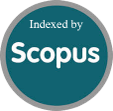Physical noise during the virtual learning process of university students
DOI:
https://doi.org/10.51798/sijis.v3i9.580Keywords:
Effective communication, virtual education, barriers to learning.Abstract
With the appearance of the internet, new technologies have constantly been evolving in the dynamics of keeping up with the new demands of information and communication, thus allowing the creation of spaces where people promote new ways of communicating and learning within the virtual learning environments. Therefore, the purpose of the research is to determine the physical noises within communication in virtual learning environments, as well as its impact on the training processes of the students of the Social Communication career at the State University of Milagro, through a study that allows knowing the direct relationship between teacher and student. In order to obtain the information of the proposed study, it was considered important to take a sample of 30 students and 10 teachers from the different semesters of the University's communication career, which will allow us to verify our starting hypothesis.
References
Adnan, M. y Anwar, K. (2020). Aprendizaje en línea en medio de la pandemia de COVID-19: perspectivas de los estudiantes. Revista de Sociología Pedagógica y Psicología., 2 (1), 45–51.
Belloch, C. (2013). Entornos Virtuales de Aprendizaje. Unidad Tecnológica Educativa (UTE). Universidad de Valencia.
Cassany, D. (2013). Sociedad de conocimiento, tecnología y comunicación (Google Books, Ed.). Google Books.
Castro-Pérez, M., & Morales-Ramírez, M. E. (2015). Los ambientes de aula que promueven el aprendizaje, desde la perspectiva de los niños y niñas escolares. Revista Electrónica Educare, 19(3). https://doi.org/10.15359/ree.19-3.11
Cedeño Romero, E. (2019). ENTORNOSVIRTUALES DE APRENDIZAJEY SU ROL INNOVADOR EN EL PROCESO DE ENSEÑANZA. Publicación Cuatrimestral. Edición Continua. Año, 4(1), 119–127. https://revistas.utm.edu.ec/index.php/Rehuso/article/view/1888
Chang, C.-L. y Fang. (2020). E-Learning e instrucciones en línea de educación superior durante la nueva epidemia de enfermedades por coronavirus (COVID-19) de 2019. Journal of Physics: Serie de conferencias, 1574 (1).
Courts, B., & Tucker, J. (2016). Using Technology to Create a Dynamic Classroom Experience. Journal of College Teaching & Learning, 9(2), 121.
Flores, N., & Martínez, D. (2021). Uso de nuevas tecnologías en tiempos de pandemia en la formación de los estudiantes de enfermería de la Universidad Técnica de Ambato. Enfermería Investiga, Investigación, Vinculación, Docencia y Gestión, 6(4), 19–29.
Fuentes, C. (2021). Modalidades del aprendizaje virtual. https://bit.ly/3gIoJGC
Gómez, I., & Escobar, F. (2021). Educación virtual en tiempos de pandemia: incremento de la desigualdad social en el Perú. SciELO Preprint. https://doi.org/10.1590/SciELOPreprints.1996Powered by TCPDF (www.tcpdf.org)
Hernández, R., Fernández, C., & Baptista, P. (2016). Diseños no experimentales. En R. Hernández, C. Fernández, & P. Baptista, Metodología de la investigación (Sexta ed., págs. 149-151). La Habana: Editorial Félix Varela.
Lázaro, R. (2021). Entrevistas estructuradas, semiestructuradas y libres. Análisis de contenido. En J. Tejero, Técnicas de investigación cualitativa en los ámbitos sanitario y sociosanitario (pág. 68). Castilla: Ediciones de la Universidad de Castilla-La Mancha. Obtenido de http://hdl.handle.net/10578/28529
Montante, A.J. (2017). Intervención de la comunicación efectiva dentro del ámbito educativo. Instituto Tecnológico y de Estudios Superiores de Occidente. Jalisco, México.
Morales, J., Latorre, D., Mesa, G., & Vargas, M. (2021). CONSECUENCIAS DE LA MODALIDAD PAT EN LA COMUNIDAD EANISTA DURANTE LA PANDEMIA POR COVID 19 EN 2020. Universidad EAN, 1–18.
Morandin, G., Russo, M., & Bergami, M. (2017). Surviving a Day Without Smartphones. MIT Sloan Management Review, 8(2), 56.
Nóbil, C.I. & Luna, Á.E. (2015). Los Entornos Virtuales de Enseñanza y Aprendizaje en la Universidad Nacional de La Plata. Una aproximación a los usos y opiniones de los estudiantes. Innoeduca. International Journal of Technology and Educational Innovation, 1(1), pp.3.
Pozo, Juan y Pérez, María. (2009). Psicología del Aprendizaje Universitario: La Formación en Competencias. Madrid: Morata S.L.
Rafael Porlán. (2020). El cambio de la enseñanza y el aprendizaje en tiempos de pandemia. Revista de Educación Ambiental y Sostenibilidad: REAYS, 1502–1503. https://dialnet.unirioja.es/servlet/articulo?codigo=7497286
Sharma, S., & Sharma, R. (2014). Effective Communication. Scholarly Research Journal’s, 3151- 3156. Obtenido de https://www.academia.edu/13237836/EFFECTIVE_COMMUNICATION
Vera, F., Araya, P., Morán, H., & Amador, S. (2014). Comunicación Efectiva: Contenidos Declarativos. Chile: Universidad de Aconcagua. Obtenido de https://alumnosenfermeriauac2014.files.wordpress.com/2014/04/manual_comunicacion_efectiva_contenidos_declarativos.pdf
Zeva, E. (2021). Clases virtuales: el problema de concentración en los estudiantes y algunos consejos – Chiqaq News. Chiqaq News. https://medialab.unmsm.edu.pe/chiqaqnews/clases-virtuales-el-problema-de-concentracion-en-los-estudiantes-y-algunos-consejos/
Downloads
Published
How to Cite
Issue
Section
License
Copyright (c) 2022 Israel Viejó Mora, Roxana Elizabeth Fiallos Narváez, Maryuri García Chaguay, Patricia Flores Villalva

This work is licensed under a Creative Commons Attribution-NonCommercial-NoDerivatives 4.0 International License.




